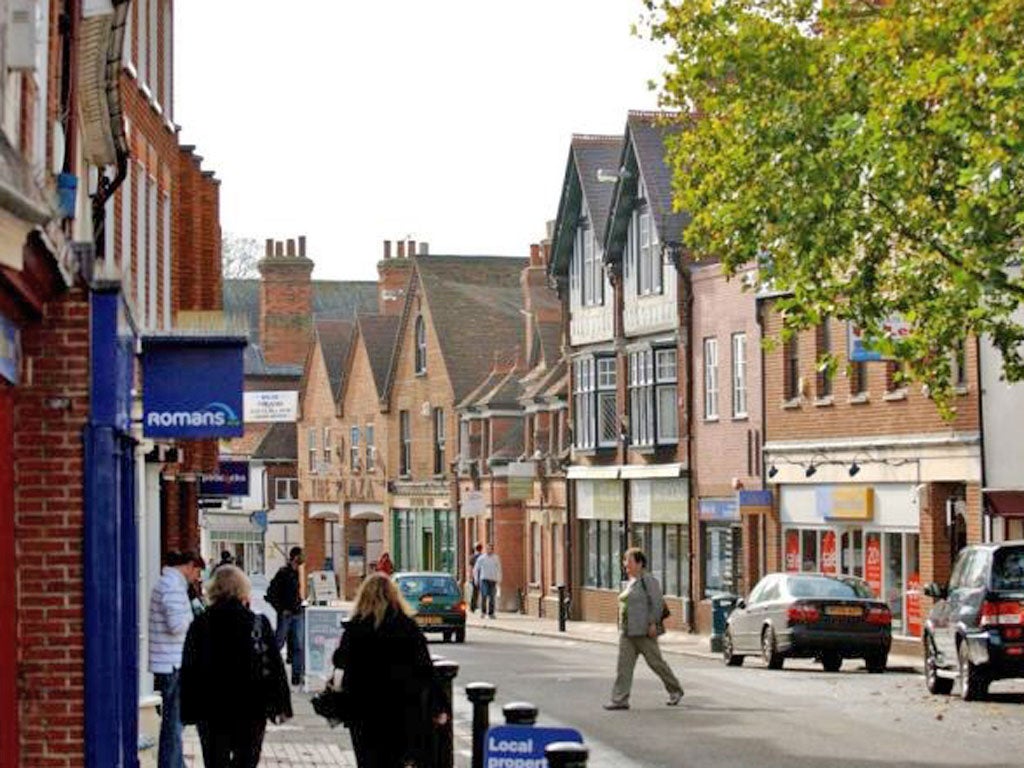Parts of the South East of England are the most financially resilient in the UK, a study has found, with Hull, Nottingham and Liverpool the least.
The Hargreaves Lansdown’s savings and resilience barometer breaks does household finances and looks at things like savings levels, being on track for retirement and debts.
While incomes form part of financial resilience, housing affordability is also an issue, because areas with a lack of affordability mean fewer people are able to buy a home and build their resilience this way, the report said.
Wokingham in Berkshire and Elmbridge in Surrey benefit from high scores for incomes and homeownership levels, researchers said.
St Albans in Hertfordshire was placed third because of factors such as its high average earnings, leaving money available for long-term planning, and a relatively high proportion of investors living there.
Meanwhile Hull was ranked at the bottom as households had relatively low levels of money leftover at the end of each month and also fared relatively poorly in terms of having emergency savings and pension savings.
Economic modelling by Oxford Economics was also used in the study.
Sarah Coles, head of personal finance, Hargreaves Lansdown said: “There’s a vast gulf between the capitals of resilience and the tougher areas where money is stretched and the future looks much harder.
“Among the top 10 most resilient local authorities, 79 per cent of households have enough cash left at the end of the month to be resilient, compared to 54 per cent among the bottom 10.”

Looking just at northern England specifically, the Ribble Valley was placed top for financial resilience, coming 39th overall.
The largely rural area, known for its picturesque villages and gastropubs, scored particularly well for savings, pensions and home ownership.
It was followed by South Lakeland (43rd overall), which also scored well for savings and pensions, and Harrogate (in 46th place), which performed favourably for incomes.
Bromsgrove is the resilience capital of the Midlands (ranked 28th overall), performing well for savings, pensions and home ownership. It was followed by Stratford-upon-Avon (29). Meanwhile Rushcliffe made number 33, Harborough 34 with Warwick placed at 44.
East Dunbartonshire (placed 24th overall), was identified as having the highest overall resilience in Scotland.
Relatively affordable housing there means home ownership levels are relatively strong, the report said.
It was followed by East Renfrewshire (in 26th place overall) and Aberdeenshire (at number 27 overall).
No locations in Wales made the top 50 for overall financial resilience, but Monmouthshire was in 25th place for how close people are to having enough emergency savings and the Vale of Glamorgan ranked 49th on this measure.
Here are the top 20 areas for overall resilience, according to the study:
1. Wokingham, South East
2. Elmbridge, South East
3. St Albans, East of England
4. Hart, South East of England
5. Epsom And Ewell, South East
6. Waverley, South East
7. South Oxfordshire, South East
8. Mole Valley, South East
9. Surrey Heath, South East
10. South Cambridgeshire, East of England
11. Tandridge, South East
12. Guildford, South East
13. Windsor and Maidenhead, South East
14. Horsham, South East
15. East Hampshire, South East
16. Winchester, South East
17. Wealden, South East
18. Sevenoaks, South East
19. Fareham, South East
20. Three Rivers, East of England
And here are the bottom 20 areas for overall resilience, according to the study:
1 Kingston upon Hull, Yorkshire and the Humber
2. Nottingham, East Midlands
3. Liverpool, North West
4. Blaenau Gwent, Wales
5. Glasgow City, Scotland
6. Blackpool, North West
7. Knowsley, North West
8. Stoke-on-Trent, West Midlands
9. Tower Hamlets, London
10. Leicester, East Midlands
11. Hackney, London
12. West Dunbartonshire, Scotland
13. Sandwell, West Midlands
14. Burnley, North West
15. Manchester, North West
16. Newham, London
17. Merthyr Tydfil, Wales
18. Dundee City, Scotland
19. Barking and Dagenham, London
20. Wolverhampton, West Midlands
The South West of England did not have any boroughs in the top – or bottom – 50 overall for financial resilience, but researchers said the local authority areas of West Devon and Cotswold performed well for savings levels. The region also performed relatively well for non-mortgage debt levels.
Burnley in Lancashire, the setting for Netflix’s Bank of Dave films which portray characters’ struggles with finances and being able to access affordable loans, was ranked 14th in the locations with the least financial resilience.
Looking at specific aspects of financial resilience, Richmond-upon-Thames in London was ranked top for households having enough emergency savings, followed by the City of London borough.
Glasgow City, followed by West Dunbartonshire in Scotland were ranked bottom for having sufficient emergency cash.
Elmbridge and Mole Valley in the South East of England were identified as having the biggest proportions of households who invest, while East Ayrshire and North Lanarkshire in Scotland had the smallest proportions.


























+ There are no comments
Add yours